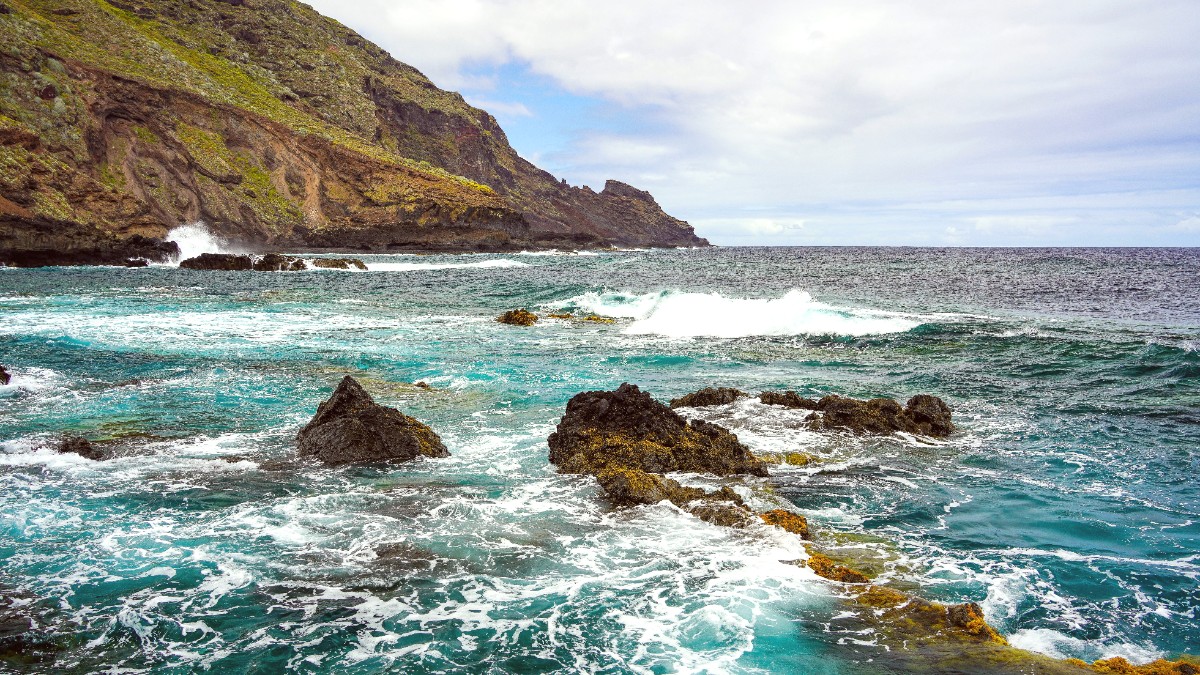
La Palma, Canary Islands
La Palma, "La Isla Bonita," presents diverse landscapes, from volcanic peaks to lush forests and historic towns.
Its compact size makes it ideal for exploring varied attractions in a relatively short time.
Access to attractions often involves driving. Verify operating hours and any permit requirements before visiting.
Main church in Plaza de España. Admire the Mudéjar ceiling and carved wooden doors. Free access outside mass times.
Former Franciscan convent, now home to the Museo Insular. Access through the museum.
Iconic colorful houses with traditional wooden balconies facing the sea. Visible from the promenade, free.
16th-century coastal fortress. Exterior viewing is free and available anytime.
Site with natural caves important for understanding aboriginal inhabitants.
La Palma presents stunning natural landscapes for discovery.
A massive erosion crater with lush forests, deep ravines, and waterfalls. A UNESCO Biosphere Reserve. Free entry. The visitor center offers information and permits for specific areas. Access points include La Cumbrecita viewpoint or Los Brecitos. Good hiking shoes are a must. Book parking at La Cumbrecita in advance during peak times.
A prime example of La Palma's laurel forest, an UNESCO Biosphere Reserve. Free access. It has a visitor center and walking trails. Explore the short, easy circular trail or the challenging PR LP 6 trail to Marcos y Cordero water tunnels (requires permits and local transfer).
A challenging but rewarding hiking trail traversing the volcanic spine of the island. Free access. Often done with a transfer service to the start point (Refugio El Pilar) and pickup at the end. It demands good fitness, proper gear, and sufficient water. Weather changes rapidly.
A stunning black sand beach known for its wild beauty and surfing. Access via a steep path (20-30 minutes walk) from a car park. No facilities exist. Currents can be strong; swim with caution. Wear sturdy shoes for the descent.
A viewpoint offering panoramic vistas of Santa Cruz de La Palma, the airport, and the coastline (Breñan Alta). Excellent for sunrise or sunset photos. Easily accessible by car.
Picturesque salt flats and a lighthouse at the southern tip of the island. Offer unique landscapes. Great for photography, especially at sunset. A small restaurant is on site.
La Palma is a Starlight Reserve, perfect for astronomical observations.
The entire island holds UNESCO Biosphere Reserve status, preserving its natural habitats.
Explore ancient water channels like Marcos y Cordero for unique hiking experiences.
Preparation for your sightseeing adventures. La Palma's diverse terrain and weather patterns call for careful planning.
Always check local conditions and specific site requirements before visiting.
items and actions for a smooth visit.
Navigating the island's attractions.
Gear and footwear for La Palma's trails.
Seek out these less-visited spots for unique experiences and views.
Panoramic views of Santa Cruz, the airport, and coastline. Excellent for sunrise or sunset photos.
An archaeological park with natural caves, shedding light on aboriginal inhabitants.
Picturesque salt flats and a lighthouse at the island's southern tip. Great for photography, especially at sunset.
Explore Los Tilos, Roque de Los Muchachos, and scenic northern villages.
Hike the Ruta de los Volcanes, visit the San Antonio Volcano, and Fuencaliente salt flats.
Discover Santa Cruz de La Palma's historic center, Los Cancajos beaches, and local markets.
Focus on the Caldera de Taburiente National Park and surrounding viewpoints.
Drive to Tazacorte, Puerto Naos, and explore the island's more sunny western side.
La Palma's natural beauty comes with a commitment to conservation.
For activities like stargazing at the Observatory, booking tours well in advance is highly advisable. Some hiking trails, especially within the National Park, may require permits for access.
Always verify the latest information from the National Park visitor center or local tourism offices.
Tips for maximizing your sightseeing experience on La Palma.
Golden hour (sunrise/sunset) provides dramatic lighting for landscapes and historic sites.
Obtain a good paper map for trails and areas with limited mobile signal.
Be prepared for microclimates; bring layers for rapid temperature changes.
For popular attractions like observatory tours or national park activities, reserving tickets in advance is advisable.
Book AttractionsThese centers provide current information, maps, and often can assist with permits for restricted areas.
Before arriving, download trail maps, audio guides, or historical information to your device.
For challenging trails, consider a guided hike with a local expert for safety and interpretation.
La Palma's volcanic origins shape its unique landscapes.
The island's diverse ecosystems shelter unique species.
Adhere to local regulations to preserve La Palma's natural beauty. This includes staying on marked trails and disposing of all waste properly.
Protecting the fragile ecosystems supports future enjoyment for all.
Beyond the main highlights, La Palma presents numerous smaller sites and natural features.
Walk through historic pathways connecting villages and ancient sites.
Explore hidden coves and unique coastal formations.
Discover the island's botanical richness.
Many rural houses are set within beautiful gardens.
La Palma's mountainous terrain offers numerous stunning vistas.
Each viewpoint presents a distinct perspective of the island.
Discover traditional craftsmanship of the island.
Purchase authentic souvenirs directly from creators.
Check local municipal calendars for small village fiestas and events.
Seek out rustic taverns for authentic, unpretentious local cuisine.
Consult with local hikers for less-traveled, rewarding walking paths.